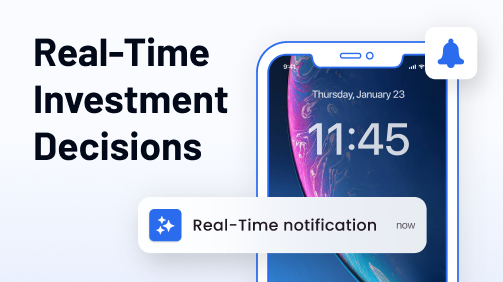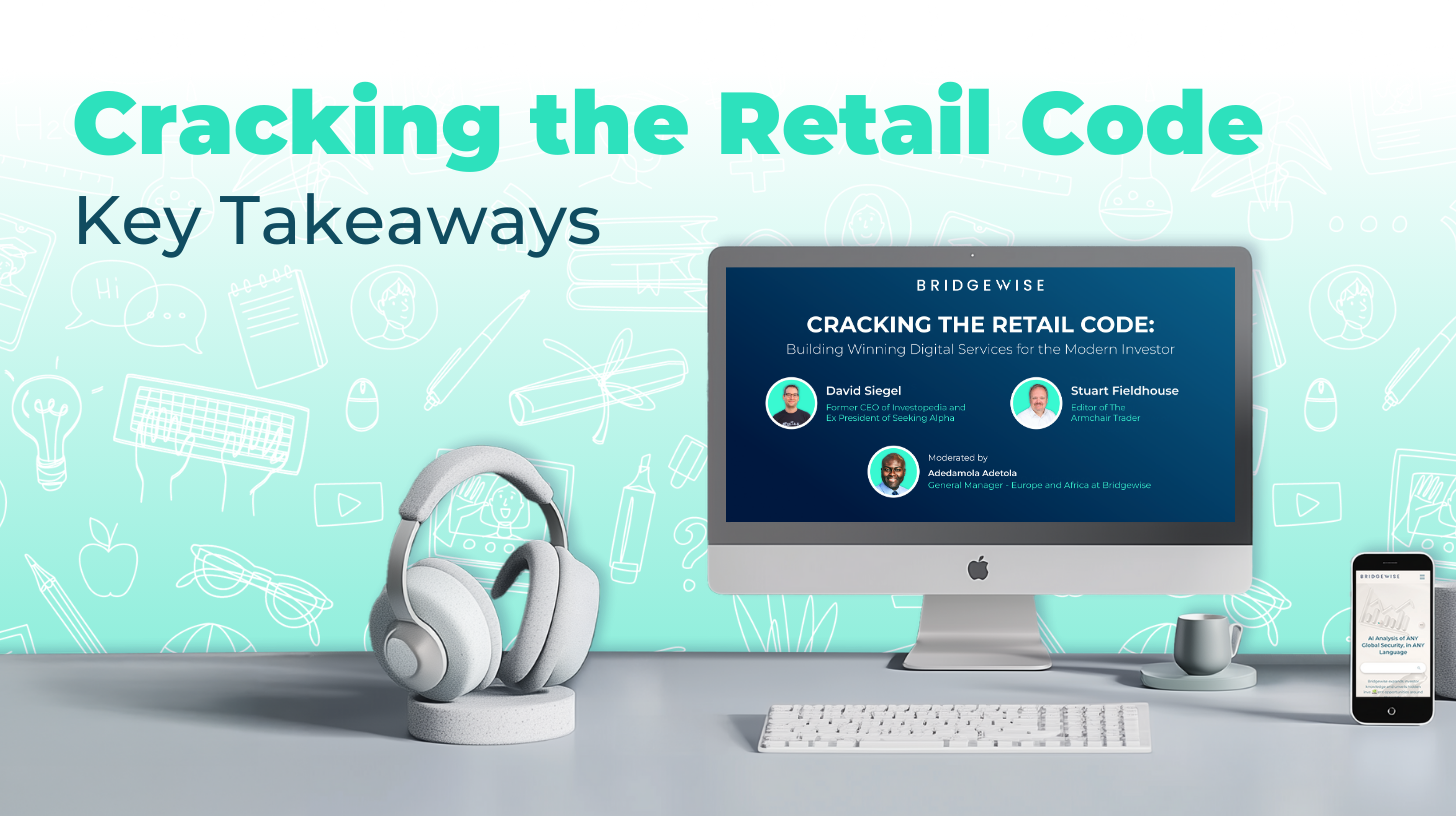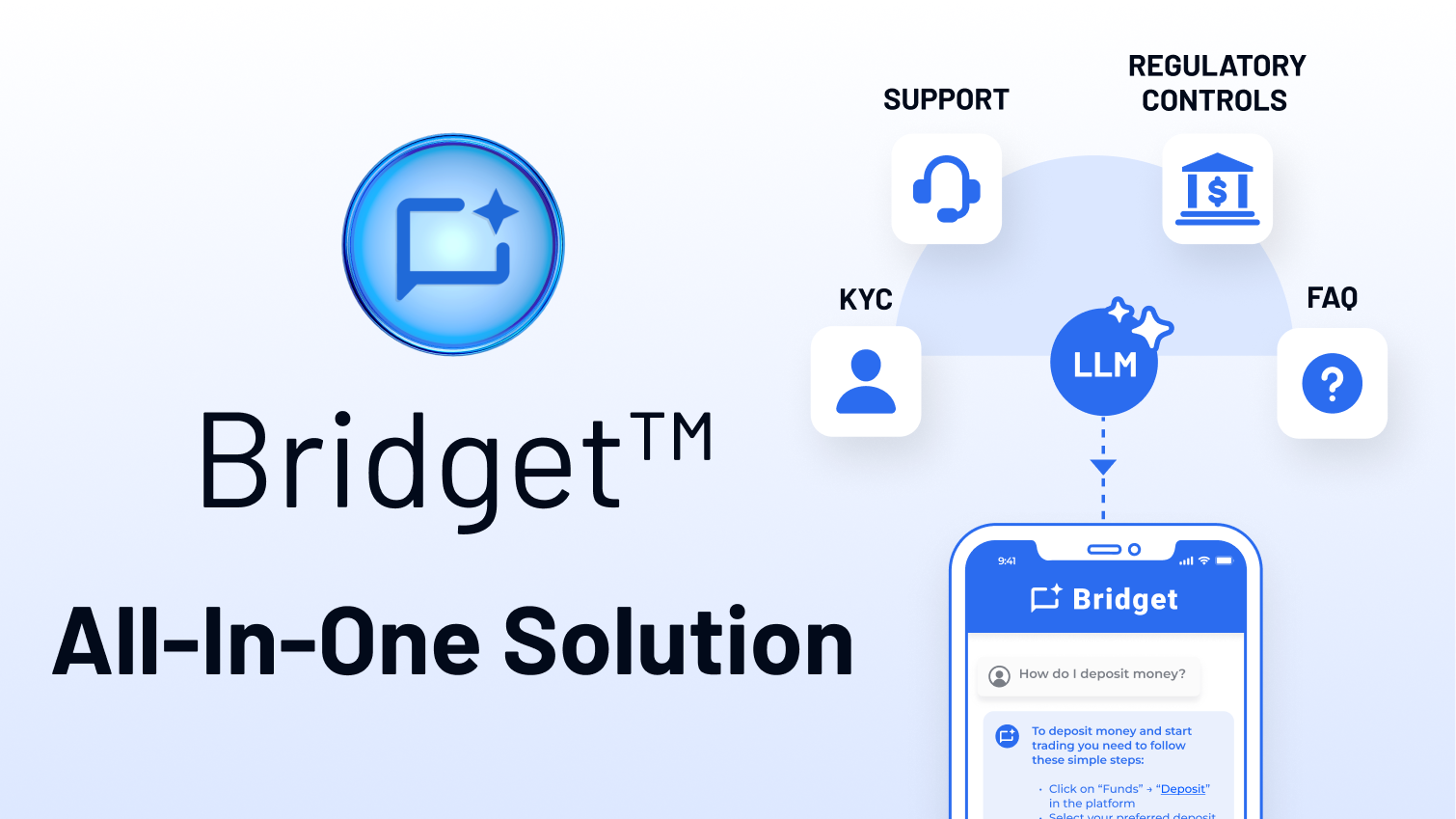
3 Ways AI Is Changing Real-time Investment Decisions
With investors, the difference between making money, or losing it, can be a matter of minutes. Today’s ...

Over the past several years, there has been a surge of retail investing platforms. They have emerged as technological and regulatory developments have allowed greater access to both trading tools and investment data, alongside an emerging generation of investors more interested in taking a hands-on role in their investment decisions.
In that environment, we brought together two of the industry’s most experienced observers for our recent Cracking the Retail Code webinar. The event took a broad look at how the retail investment landscape has changed over recent years and the trends that platforms need to be aware of to stay successful.
Joining the webinar were David Siegel, former CEO of Investopedia and Ex-President of Seeking Alpha, and Stuart Fieldhouse, Editor of The Armchair Trader. They were joined by Adedamola Adetola, Bridgewise GM for Europe and Africa, who hosted the event.
Discover some of the main takeaways from the webinar below.
Siegel discussed the two main sources of data that web companies can use to help them personalize their services and weighed in on which type helps drive greater engagement.
“When it comes to personalization, there’s two types of data that [platforms] tend to use. There’s registration data, which means when you enter the site or the app you provide information, ‘I’m interested in … bonds, stocks, etc.’ And then there’s also behavioral data, which is what you’re actually doing on the site, to personalize what you would be interested in.
“A lot of studies have been done on this; what should you use for personalization? Registration data or behavioral data. Every study has found that behavioral data is far more valuable than registration data.
“We found that people might say ‘I’m really only interested in small cap stocks’ or whatever, but when they’re on the platform, all their time is spent looking at [something else]. So, from a personalization standpoint, don’t give people what they asked for, give people what they are actually spending their time doing.”
Fieldhouse commented on the sheer amount of data that has become available to investors and how platforms need to find the right way to leverage that data for their users.
“The thing that’s really changed is you’re now seeing a market where there are so many tools, and so much data available for consumption by the retail trader, which even 15 years ago, would have been the preserve of the hedge funds and the banks. Now, people get that on an app. Not all of it’s free, but a lot of it is. So, for younger investors, they are more tech savvy and able to juggle a lot of different tools which they can use for market analysis, which they didn’t have before.
“I think for the retail platform today, a lot of the emphasis has to be in delivering those kinds of tools, those market insights. The more you can centralize a really nice set of different trading tools, different analysis, and unique insights into the market in one portal, the more you will get people coming back and actually using your portal.”
Siegel, recalling his previous experience at Investopedia, discussed three pillars that are critical to the success of retail platforms.
“The first is mission; focus on mission, don’t be too broad. It’s extraordinarily important to understand what your mission is, but also what it isn’t, and to stay focussed on really understanding where you play, and that means also understanding where you don’t play. So you can’t be everything to everyone, because then you’re just nothing to no one.
“Second, there are dozens of different models for these businesses and building the right revenue model for a platform is critical. For instance, what I learned from my previous experiences, is there’s a huge advantage to being a subscription model vs an advertising based model, is one example.”
“Third, what is the moat for your business? If you don’t have something that’s going to be a truly unique value proposition, that’s difficult to copy, you don’t have a business.“
In a discussion about the state of investor education and how the increasing amount of available information is impacting it, Fieldhouse explained how important it is for platforms to build trust with their audience.
“The problem I think you have, though, is misinformation. There are a lot of information sources out there, and a lot of them are not accurate and are in fact actively misleading. If you just take the stock market, there are a lot of people trying to ramp stocks. There’s a big rumor mill out there that’s just churning out misinformation. So a lot of that you have to heavily discount.”
“Building trust with your readership is critical, particularly in the financial sphere because you’re asking people to part with their cash, or stake their future, so they’ve got to trust what you’re saying because there are certainly other untrustworthy sources out there.”
You can watch the full recording of the webinar here. If you want to learn more about the ways Bridgewise can deliver investment intelligence solutions to your users, sign up for a demo today.

With investors, the difference between making money, or losing it, can be a matter of minutes. Today’s ...

When we first launched Bridget™ , our AI chat solution for investment insights, it represented a ...